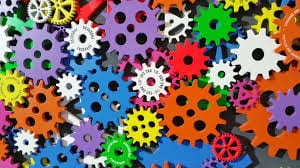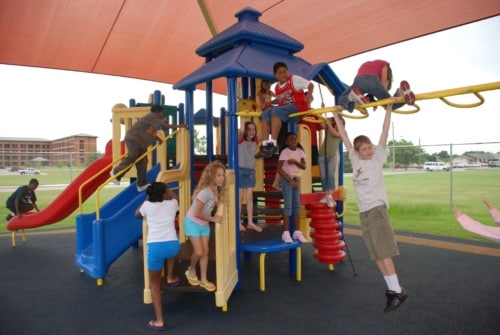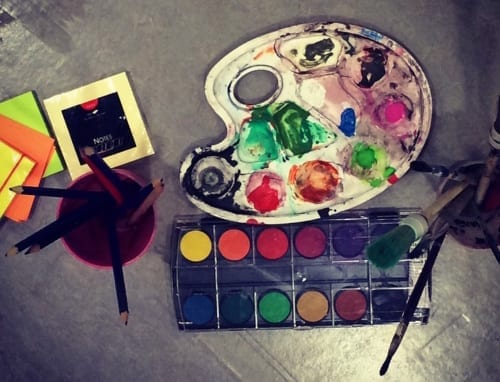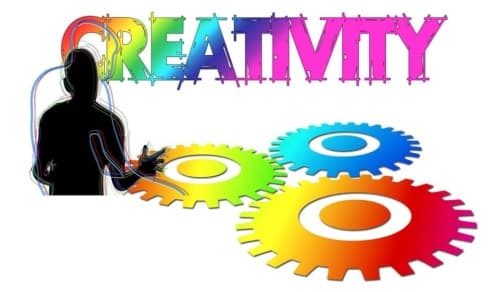A fundamental ability students will use throughout their lives
By Welda Simousek and Virginia Pickerell
 There are essential, universal skills today’s students will need both now and in the future. We have seen the list: Communication Skills, Collaboration Skills, Decision-Making Skills, Critical Thinking Skills, Problem-Solving Skills. However, there is ONE SKILL that must be mastered to do any of the skills on that list. That super skill is: CREATIVITY!
There are essential, universal skills today’s students will need both now and in the future. We have seen the list: Communication Skills, Collaboration Skills, Decision-Making Skills, Critical Thinking Skills, Problem-Solving Skills. However, there is ONE SKILL that must be mastered to do any of the skills on that list. That super skill is: CREATIVITY!
Learning and practicing creative thinking skills, plus establishing the environment to encourage the development of those creativity skills is the number one goal for every teacher and student and it can be practiced and have an impact by dedicating even a few minutes each day. Weaving creativity into everything that is done is the best preparation for an unknown future.
Creativity practice can assist and achieve such things as:
- assisting in breaking mindsets
- challenging assumptions
- reinforcing the idea that there is no easy nor one right answer
- learning how to suspend judgment
- learning there is no such thing as a “mistake” in thinking
 Many students and adults have or develop one answer for many situations. Think of a student on the playground who only has one answer for an issue: if someone hits me, I hit them! Increasing the possibility of other alternatives does not just magically happen! All students deserve the opportunity to explore and share ideas and talk about alternatives and new ideas.
Many students and adults have or develop one answer for many situations. Think of a student on the playground who only has one answer for an issue: if someone hits me, I hit them! Increasing the possibility of other alternatives does not just magically happen! All students deserve the opportunity to explore and share ideas and talk about alternatives and new ideas.
Being stuck with only one answer is considered convergent thinking, and while convergent thinking is needed, it cannot come before divergent thinking. In order to grow students into their future, divergent, creative thinking is necessary to practice.
So, what are the creativity skills, and how might the creativity skills be broken down and taught?
These are the four skills to know and practice to do creative thinking:
- FLUENCY — the ability to generate many ideas; brainstorming is about this
- FLEXIBILITY — the ability to generate many different categories of ideas
- ORIGINALITY — the ability to generate an idea unique from all others
- ELABORATION — the ability to go deep into one area and generate many details about it
 In what ways might these skills be taught?
In what ways might these skills be taught?
First, a non-judgmental environment must be established, by teachers and students:
- No negativity. This includes not reacting to ideas at all; don’t say “good idea” because this can prevent the next person from wanting to contribute in case their idea is not viewed as “good.”
- All ideas are valid at this stage; no such thing as a “dumb” or “crazy” one.
- Build on the ideas of others.
- Quantity, not quality, counts at this stage.
- Everyone Contributes
Secondly, students must be in groups and feel free to respond to a cue question. Students can be put in groups of 4-8 students, around a table, with something to write on and something to write with. The teacher would then give a cue question, such as, “Name everything that grows” (or a cue question that is commensurate with the age of the students). Students will take turns giving his/her answer and writing his/her answer on his/her paper, and keep going around the circle until the time to stop is announced. (Time is dependent on age of students/how much practice, etc.) When the time to stop is announced, students add up how many answers they have as a group. That total is recorded for each group as a baseline number. Remind students it is only a contest for their own group to get more answers the next time, and groups are not competing! This is a FLUENCY SCORE.
In order to find the “FLEXIBILITY SCORE” for the group, the group decides how many categories were mentioned in their answers. If the first person said “flowers” grow, and everyone else names another flower, they would have only one category.
 The third score is really fun. The instructor asks the group to use 6-inch voices and choose ONE answer the group believes they have that NO ONE ELSE in the room has. As each group gives their answer, the rest of the class says “yes… we have that answer” with a thumbs down or, if that answer was not given in their group, it is a “thumbs up” and the answer is ORIGINAL.
The third score is really fun. The instructor asks the group to use 6-inch voices and choose ONE answer the group believes they have that NO ONE ELSE in the room has. As each group gives their answer, the rest of the class says “yes… we have that answer” with a thumbs down or, if that answer was not given in their group, it is a “thumbs up” and the answer is ORIGINAL.
Practicing the final skill, ELABORATION, takes a little different skill, and you are wanting students to learn to go deeper (perseverate) into a topic. One not only sees who can and does perseverate, but also realizes that with no experience in a particular topic, it is almost impossible to give answers, and that concept needs to be discussed after this activity. Again, record the number of answers for a group.
A strategy that is an “organizer” for thinking, and can be used is called SCAMPER. There is nothing that could be done to create ideas that is not in this acronym:
- Substitute – What can I substitute to make an improvement? [Mint-filled Oreo]
- Combine – What materials, features, processes, people, products, or components can I combine? [Oreo ice cream]
- Adapt – What part of the product could I exchange for something else? [Other cookies started to use filling]
- Modify – What will happen if I change part or all of it, maybe even distorting it? [Double-stuffed Oreos; at holidays, the color of the filling is changed]
- Magnify – What will happen if I enlarge, warp, or exaggerate a feature or component? [Giant Oreos]
- Minimize (or “Minify”) – What will happen if I shrink part or all of the product? [ Mini Oreos]
- Put to other uses – How could this product be used for different purposes? [Crush and make pie crusts]
- Eliminate – What would happen if I removed part or all of a component? [100-calorie packs]
- Rearrange – What if I looked at this from a different angle or perspective, or rearranged parts of it? [Oreo ice cream cones]
- Reverse – What if I did parts of it in reverse or put things in a different order? [White fudge covered Oreos]
 After students have been working on fluency or brainstorming for awhile, have them apply the questions from the SCAMPER technique to their ideas. This should help them come up with many new ideas or variations of old ideas. For practice, have the students watch commercials to see how many products have been created through this process. Or, bring in all the samples from the Oreo example.
After students have been working on fluency or brainstorming for awhile, have them apply the questions from the SCAMPER technique to their ideas. This should help them come up with many new ideas or variations of old ideas. For practice, have the students watch commercials to see how many products have been created through this process. Or, bring in all the samples from the Oreo example.
Help your staff and students to think creatively. Keep practicing fluency, flexibility, originality, and elaboration, and you will see a great deal of divergent thinking happening. If you practice this in groups, they will also practice other 21st Century skills such as communication and collaboration. Enjoy!
Author
Welda Simousek is the owner of Welda Consults, LLC. Virginia Pickerell is one of the consultants. See WeldaConsults.com or contact welda@weldaconsults.com for further information about consulting on creativity and many other topics.
- The Huffington Post – Making Time for Creativity is Crucial for Kids
- Teacher Magazine – Introducing Creative Education in a school
- The Brown and White – Sir Ken Robinson discusses creativity in the classroom






